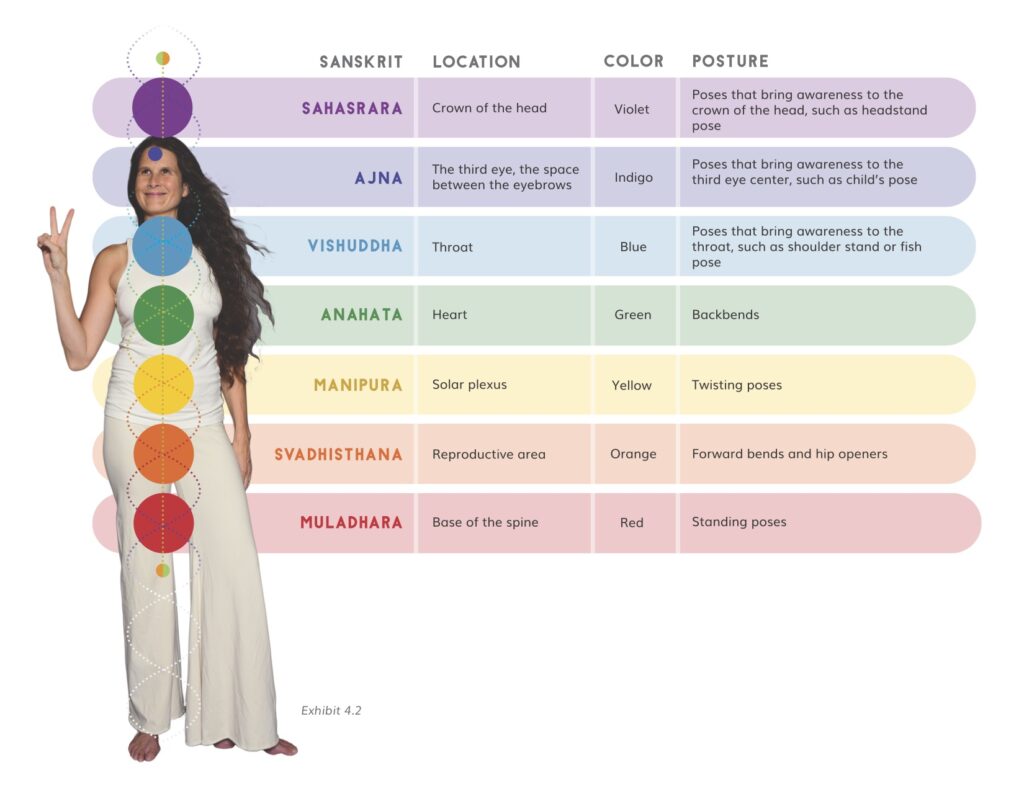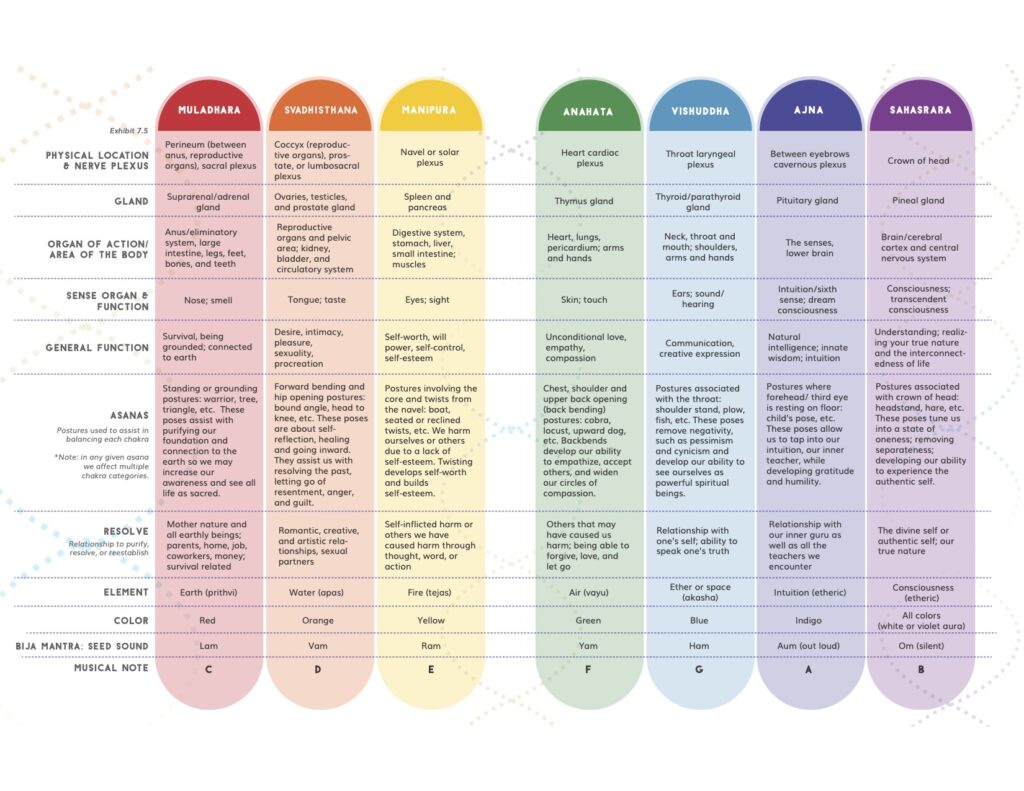Intro to the Chakras + Asana
Understanding the chakras and their functions may be confusing at times, and a wealth of information—with differing explanations—is available on the subject. When we embark upon such a vast topic, it is important to ask the question, “How and why do the chakras make a difference in my life?” In this section, I provide practical examples that illustrate how to bring the seven main chakras into balance through your everyday life. These examples include speaking, eating, working, and collaborating with others. Keep in mind that I am addressing only the seven main chakras and that many more of them reside within our bodies. I begin by examining the root chakra and moving upward.
A chakra is an energy wheel, or vortex. You may think of the chakras as centers of spiritual power; they are aspects of consciousness that serve as connection points between the body and the mind. They integrate and express vital life energy and regulate the flow of energy throughout the body. Though the chakras may not be seen with our physical eyes, they may be felt. For example, when the flow of energy in our chakra system becomes blocked, we may experience physical tension. Seven main chakras reside in various physical locations and act as subtle aspects of the body.
While every asana affects multiple chakras, certain posture categories are predominantly focused on singular energy centers. Each chakra correlates with a specific asana category.

For first-time practitioners, I recommend beginning with the standing pose category; these are associated with the chakra located at the base of the spine. Yogis who are well-established in their asana practice may safely start with other posture categories. Experienced practitioners may explore reversing the order and start by turning the body upside down in headstand, shoulderstand, or assume other inversions for a certain goal.
Turning upside down offers an additional mood enhancer, since inversions release neurotransmitters and endorphins that lift the spirits. Starting your yoga practice from this perspective is another way to connect with a peaceful and meditative state. More challenging inversions—such as handstand or headstand—also fit well midway through a sequence. With this approach, we assume peak poses when we have more energy, versus leaving them until the end of our practice.
Again, I recommend the above changes in sequencing for individuals who consistently practice asana. As part of a World Peace Yoga practice, I suggest that first-time yogis begin their asana sequences with standing poses. Following are some perspectives on this approach:
Standing Poses from a Physical Perspective
Most sequences in the World Peace Yoga book feature standing poses before seated forward bends, back bends, and inversions (the yin restorative sequence is the exception to this rule). Standing poses root our bodies to the earth through our feet, and this brings greater awareness, strength, and stability to the legs. Some standing asanas include forward, backward, and side bends; they may also require twists and inversions.
To warm up and prepare for the rest of your practice, I believe one of the safest methods is to start with a variety of standing poses. When standing, our muscles are activated and engaged to a certain degree, which assists in protecting our joints. When seated, it is very easy to relax the muscles and be inactive (or less aware) within the pose; this may leave a yogi prone to injury.
In addition, many adults find it difficult to practice asanas on the floor (tai chi and qigong have become popular, especially among older adults because the practice is done entirely while standing). Standing asanas set the foundation, both physically and spiritually, and prepare our bodies for the rest of our practice.
Standing Poses from a Subtle/Energetic Perspective
Any given yoga posture affects multiple chakras. Standing poses, as well as other poses, affect the root chakra, muladhara, at the base of the spine. Indeed, standing asanas largely focus on the muladhara chakra, with powerful results.
Muladhara chakra connects directly to our primal instincts, including fear, and the urge to meet basic needs for survival. This chakra impacts our relationships with the earth and nature, our parents, food, home/shelter, job, money, and so on. When seeking to progress within a spiritual practice, it is beneficial to first address our basic needs. We require a strong root system to grow and flourish to our full potential. The standing asanas connect us to the earth and assist us in establishing roots. They purify our relationship with Mother Earth and strengthen our ability to survive and thrive in this world. With this approach, we begin our practice by purifying our foundations and seeing all life as sacred.
Read more on the chakras in Chapters 4 and 7 of World Peace Yoga: Yoga for People Who Breathe by Anna Ferguson.
Watch/practice/listen in on the following videos.

